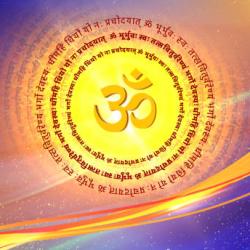By Alyce McKenzie
 I've never written an essay on sex and Christianity before. I have been a pastor for almost 30 years now. That's a long time to go without writing about sex. I haven't preached about it much. Though I've never thought that sex was just for procreation, rearing three children made me tired enough to think maybe that was the plan. I think sex is a beautiful gift and, like all beautiful gifts God has given us human beings, we specialize in cheapening, perverting, and squandering it. I think we talk too much about sex in the Church, and I think we don't talk enough about sex in the Church.
I've never written an essay on sex and Christianity before. I have been a pastor for almost 30 years now. That's a long time to go without writing about sex. I haven't preached about it much. Though I've never thought that sex was just for procreation, rearing three children made me tired enough to think maybe that was the plan. I think sex is a beautiful gift and, like all beautiful gifts God has given us human beings, we specialize in cheapening, perverting, and squandering it. I think we talk too much about sex in the Church, and I think we don't talk enough about sex in the Church.
In 1977 I went to a rural community near Charlotte, North Carolina to serve a little United Methodist Church as their summer student intern. I was told by somebody -- I think it was the pastor's wife -- not to wear open-toed shoes in the pulpit because the toe cleavage was too alluring to the men of the congregation. I wondered why, if they were hidden behind the pulpit. I also wondered why in general.
I feel an Andy Rooney ramble coming on, so I'm going to focus now on the Bible and its insights about sex. Not the whole Bible. That's too ambitious a topic. But the book of the Bible we think of when we hear the word "sex": the Song of Songs. I'm going to focus on the sexiest part of the sexiest book in the Bible: 2:8-13. It's a poem with some pretty steamy symbolism. Before the sermon on this passage, we're going to need to send the children out the side door of the sanctuary to children's church in the Fellowship Hall.
The Song of Songs is an extended secular love poem that ancient Jewish and Christian traditions have attributed to Solomon. While it has Egyptian counterparts, and other love poems must have been composed in biblical times, it is the only example of secular love poetry from ancient Israel that has survived. The presence of Aramaic, Persian, and mishnaic language indicates a postexilic date of around 300 B.C.E. (See Ariel and Chana Bloch, The Song of Songs: A New Translation with an Introduction and Commentary, New York: Random House, Inc., 1995, 25.) In ancient canonical lists the Song of Songs is listed among the wisdom books along with Proverbs and Ecclesiastes. Whether or not Israel's sages actually wrote these poems, it seems likely that they were responsible for preserving and transmitting them. While I haven't conducted a Gallup poll, I suspect that the Song of Songs is not among the top ten of preachers' favorite texts. This is not because it is violent or disturbing, but because it is sensuous. And that's a shame.
Historically, interpreters have tried to apply the antiseptic of allegory to the book's sensuality. Jewish interpreters have viewed the book as love poems between Yahweh and Israel or Torah. Christian interpreters have viewed it as love poems between Christ and the Church his bride, or, in medieval times, between Christ and the Virgin Mary. (See George A. Maloney, SJ, Singer of the New Song: A Mystical Interpretation of the Song of Songs, Notre Dame, Indiana: Ave Maria Press, 1985, 14-15.)
The earnest, delicate sensuality of the two young lovers of the Song of Songs cannot be allegorized away. It remains a voluptuous poem about the sexual awakening of a young woman and her lover. The two meet in an idealized landscape of fertility and abundance, a kind of Eden, where they discover the pleasures of lovemaking and the power and beauty of human romantic love. That power is eloquently expressed near the end of the book.
"...Love is strong as death, passion fierce as the grave. Its flashes are flashes of fire, a raging flame. Many waters cannot quench love; neither can floods drown it. If one offered for love all the wealth of his house, it would be utterly scorned" (8:6b-7).
The Song is set in springtime, in the city of Jerusalem with its outlying vineyards and pastures. It is an invitation to a tryst by the male beloved to his female lover. Throughout the collection of poems, the woman is assertive and sensuous, pursuing her lover (3:1-4, 5:6-7), inviting him boldly (4:16, 6:11-12, 7:13, 8:2, 5), not acted upon, as women are portrayed in the priestly genealogies and typical depictions of sexual relations.
In the Song the lovers take turns inviting one another, and love is wholly reciprocal (Bloch, 4). Both are described in tender images (lilies, doves, gazelles) as well as forceful, stately terms (pillars, towers). The love between the two is faithful, joyful, satisfying, passionate, and mutual. In many familiar love stories, like Romeo and Juliet, love is closely tied to loss and death. For Tristan and Isolde or Heathcliff and Catherine, love itself is a form of suffering. The lovers in the Song savor love rather than suffer from it (Bloch, 7).



